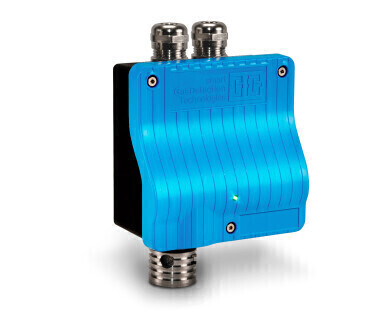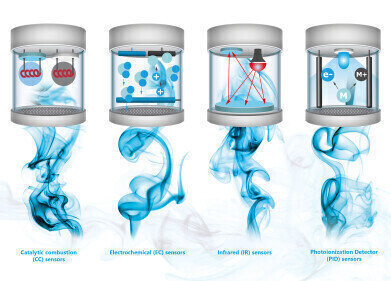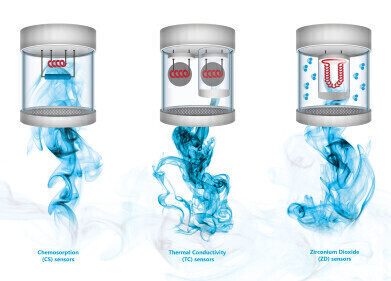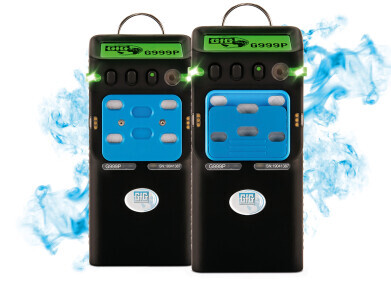Safety
How different sensor technologies are used in gas detection
Sep 19 2023
Gas detection systems are used across numerous industries, from manufacturing processes to firefighting. But all gas detections devices - no matter if portable or fixed – rely on high-quality sensors to monitor the concentrations of hazardous gases accurately. There are many different methods of detecting gases, as reflected by the many different sensor technologies currently in use. Each measuring method is especially suitable for certain types of gases or measuring ranges. To give you an overview, some of the most common ones are explained below.
Catalytic combustion (CC) sensors: Catalytic combustion is a very reliable measuring method for detecting flammable gases and vapors within the LEL (“Lower Explosion Limit”) range. It uses two sensors (one detector and one reference sensor) which are connected via a Wheatstone bridge circuit. As soon as a combustible gas comes into contact with the catalytic detector sensor (and oxygen) it will burn up. The heat generated in this process is then converted into a measurable electrical signal which is used to determine the concentration of gas.
Electrochemical (EC) sensors: This measurement method is very energy efficient and especially suitable for detecting toxic gases, O2 and H2. Sensors using electrochemical measurement technology consist of three electrodes and a conductive electrolyte. The gas you need to measure diffuses through a membrane and reacts with the working electrode which generates a flow of ions to the counter electrode. The measured current corresponds to the concentration of the monitored gas. This allows for selective measurement of a specific gas.
Infrared (IR): The infrared measuring method can be used for measuring all heteroatomic gases, such as carbon dioxide and hydrocarbon compounds. It has many benefits when compared to other technological approaches, such as its very high accuracy and low cross-sensitivity. IR sensors utilize the property of certain gases to absorb light in particular wavelength ranges (bands), which the main natural components of air (nitrogen, oxygen and argon) don’t do. Two infrared beams (a measuring and a reference beam) are shot at detectors inside the sensor. If the measuring beam is weakened by a gas, the detector will confirm this reduced intensity and give out the corresponding gas concentration.
Photoionization Detector (PID): PID sensors are commonly used for measuring volatile organic compounds or “VOCs”, such as solvents or petrol and diesel vapors, even in very low concentrations. Their short response time and very high sensitivity make them suitable for measuring many different gases however. Photoionization detectors absorb air and expose it to ultraviolet light. The photons in the UV light cause certain molecules to decompose into positively charged ions and electrons. This results in a current flow between the electrodes, which is then measured. This value is proportional to the gas concentration.
There are of course many more measurement methods, such as thermal conductivity (TC) or chemisorption (CS). Our versatile 22 series transmitters cover nearly the entire range of technologies while offering slightly different additional advantages, thus providing you with a safety concept that perfectly fits your needs. As an example, the CC22 ex transmitter is ATEX certified for use in Ex zone 2 and can therefore be used to detect flammable gases and vapors even in hazardous areas. If you are interested in learning more or have any questions, please do not hesitate to contact one of our specialists. We will find the right sensors and devices for your application!
Digital Edition
PIN 25.3 June/July
June 2024
Analytical Instrumentation - Recent Advances In Various Bench Scale Accelerated Oxidative Testing Methods For Fuels - Petrochemical Industry: Anton Paar Solutions Streamline Processes, Reduce H...
View all digital editions
Events
Jul 30 2024 Jakarta, Indonesia
Jul 30 2024 Jakarta, Indonesia
China Energy Summit & Exhibition
Jul 31 2024 Beijing, China
Jul 31 2024 Chengdu, China
Aug 05 2024 Moon Township, PA, USA




















